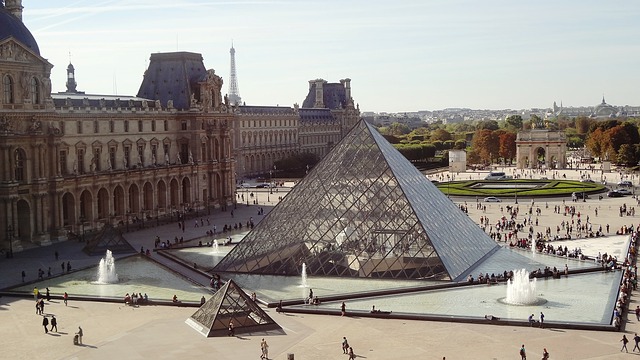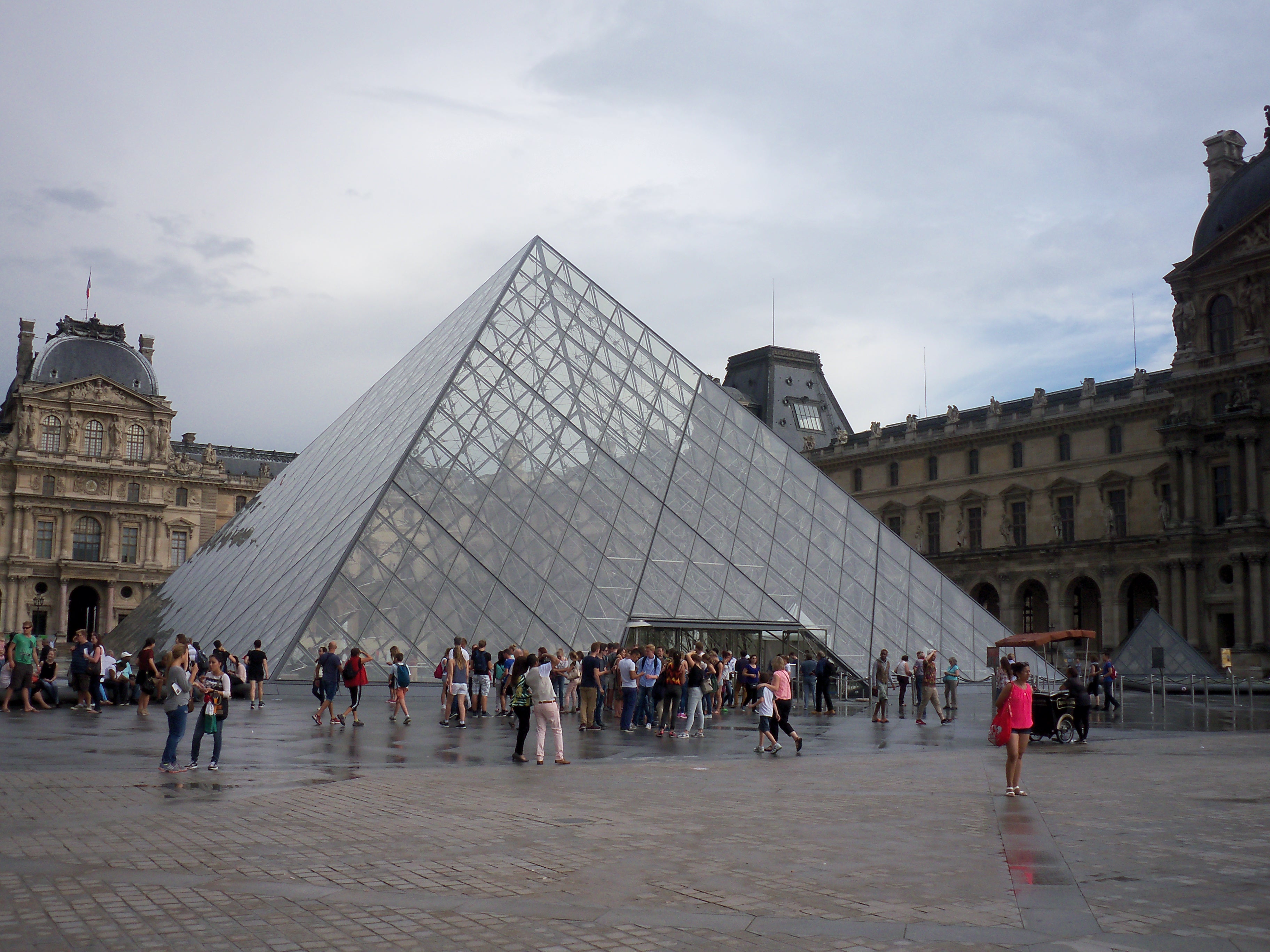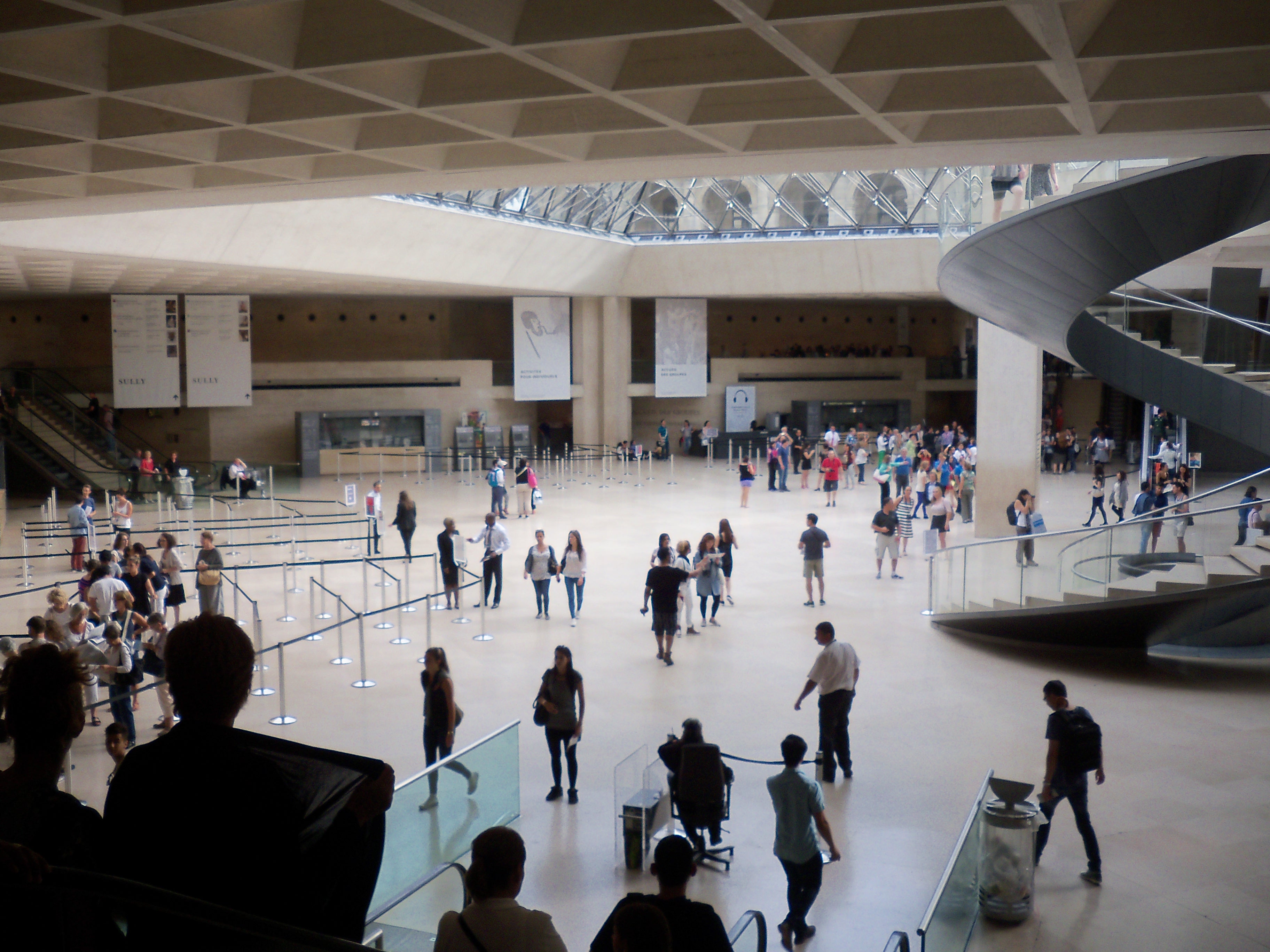The Louvre
The Louvre is a museum of art and antiquities located on the Right bank of the Seine in Paris. Covering an area of 60,600 sq. m (652,300 sq. ft), and with more than 380,000 objects and 35,000 works of art, the Louvre is the largest museum in the world.
It first opened as a museum in 1793, during the period of the French Revolution known as the Reign of Terror. It was said that the act of opening an art museum to the general public in a building that had once been a royal palace was inherently revolutionary.
The museum houses some of the most famous and valuable pieces of art in the world, including the Venus de Milo statue, Leonardo Di Vinci's Mona Lisa, and The Last Supper.
In architectural terms, the Louvre is made of cut stone and is a vast complex of wings and pavilions on four main levels. Despite appearing to be unified, it is in fact the result of many phases of building, modification, destruction, and restoration that took place over several centuries.
The museum is housed in the Louvre Palace which was originally built in the late 12th century under Phillip II. It remained a residence of the French kings until 1682. The Louvre was altered frequently throughout the Middle Ages, being converted into a residence in the 14th century by Charles V, and being renovated into the French Renaissance style by Francis I in 1546.
The architect Pierre Lescot was one of the first to apply pure classical ideas in France, making the Louvre one of the most influential buildings of the Renaissance. ITs distinctive double-pitched mansard roof was the source of inspiration for many 18th-century buildings in Paris, as well as throughout Europe and the United States.
The buildings of the Louvre were enlarged during the 19th century. Towards the end of the Paris Commune, a socialist government established in 1871 that only lasted a few months, the Tuilleries Palace, the Louvre's west wing, burnt down shortly before the French army retook the city. The building stood for a few years before eventually being demolished and replaced with the Tuilleries gardens and the central courtyard of the contemporary Louvre.
For the bicentennial celebrations of the French Revolution in 1989, President Mitterrand commissioned the Chinese-American architect Leoh Ming Pei to build the Louvre Pyramid. Although controversial when first unveiled, it has since come to be accepted as a successful modernist juxtaposition to the classical architecture that surrounds it. Made out of steel and glass, it was designed to the same proportions as the pyramid of Cheops, reaching a height of 20.6 m and with a square base of 35 m. The pyramid's faces are covered by nearly 700 panes of glass.
The Louvre is one of the major tourist attractions of Paris, receiving an estimated 9.6 million visitors a year.
[edit] Related articles on Designing Buildings Wiki
- British Museum.
- Building of the week series.
- Centre Pompidou.
- City Hall, London.
- Conservation and storage facility for the Musée du Louvre
- Dali Theatre and Museum.
- Eiffel Tower.
- Florence Cathedral.
- Guggenheim Museum, Bilbao.
- Leaning Tower of Pisa.
- Mansard roof.
- Roman Colosseum.
- Royal Albert Hall.
- RSHP conservation and collection facility for the Louvre, France.
- Sage Gateshead.
- Solomon R. Guggenheim Museum.
- Titanic Museum.
- The Gherkin.
- The White House.
- Villa Savoye.
Featured articles and news
RTPI leader to become new CIOB Chief Executive Officer
Dr Victoria Hills MRTPI, FICE to take over after Caroline Gumble’s departure.
Social and affordable housing, a long term plan for delivery
The “Delivering a Decade of Renewal for Social and Affordable Housing” strategy sets out future path.
A change to adoptive architecture
Effects of global weather warming on architectural detailing, material choice and human interaction.
The proposed publicly owned and backed subsidiary of Homes England, to facilitate new homes.
How big is the problem and what can we do to mitigate the effects?
Overheating guidance and tools for building designers
A number of cool guides to help with the heat.
The UK's Modern Industrial Strategy: A 10 year plan
Previous consultation criticism, current key elements and general support with some persisting reservations.
Building Safety Regulator reforms
New roles, new staff and a new fast track service pave the way for a single construction regulator.
Architectural Technologist CPDs and Communications
CIAT CPD… and how you can do it!
Cooling centres and cool spaces
Managing extreme heat in cities by directing the public to places for heat stress relief and water sources.
Winter gardens: A brief history and warm variations
Extending the season with glass in different forms and terms.
Restoring Great Yarmouth's Winter Gardens
Transforming one of the least sustainable constructions imaginable.
Construction Skills Mission Board launch sector drive
Newly formed government and industry collaboration set strategy for recruiting an additional 100,000 construction workers a year.
New Architects Code comes into effect in September 2025
ARB Architects Code of Conduct and Practice available with ongoing consultation regarding guidance.
Welsh Skills Body (Medr) launches ambitious plan
The new skills body brings together funding and regulation of tertiary education and research for the devolved nation.
Paul Gandy FCIOB announced as next CIOB President
Former Tilbury Douglas CEO takes helm.
UK Infrastructure: A 10 Year Strategy. In brief with reactions
With the National Infrastructure and Service Transformation Authority (NISTA).

























